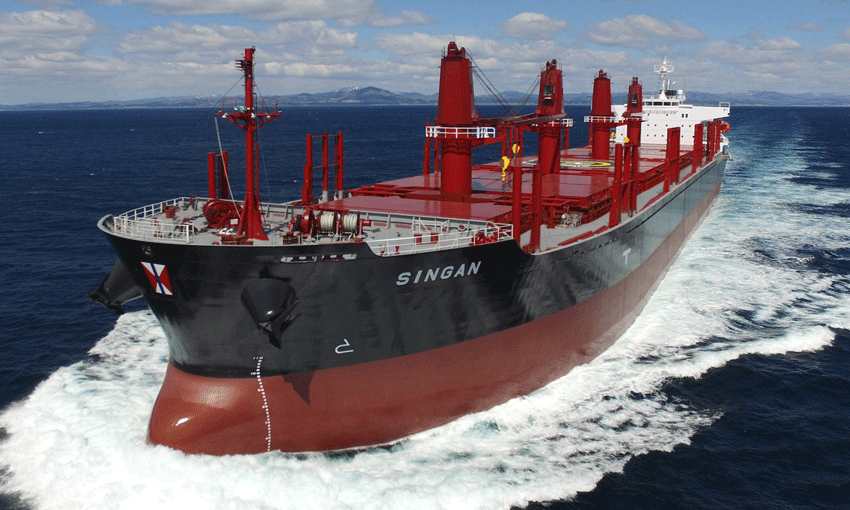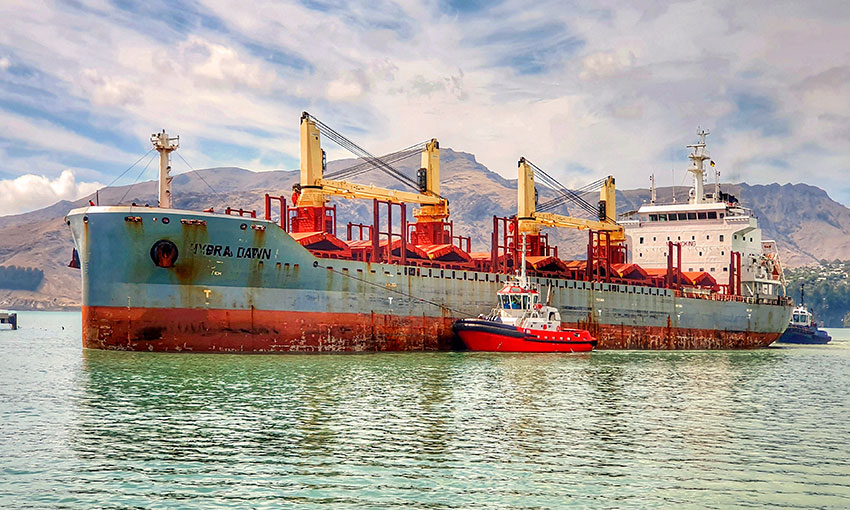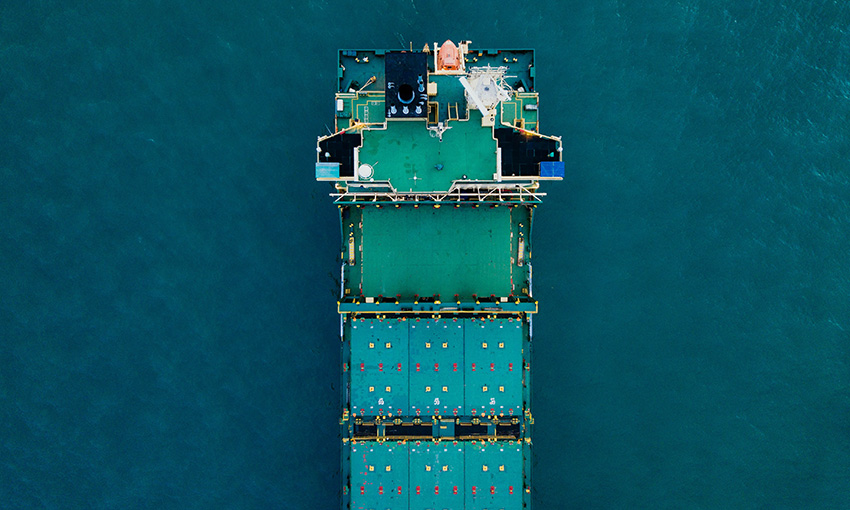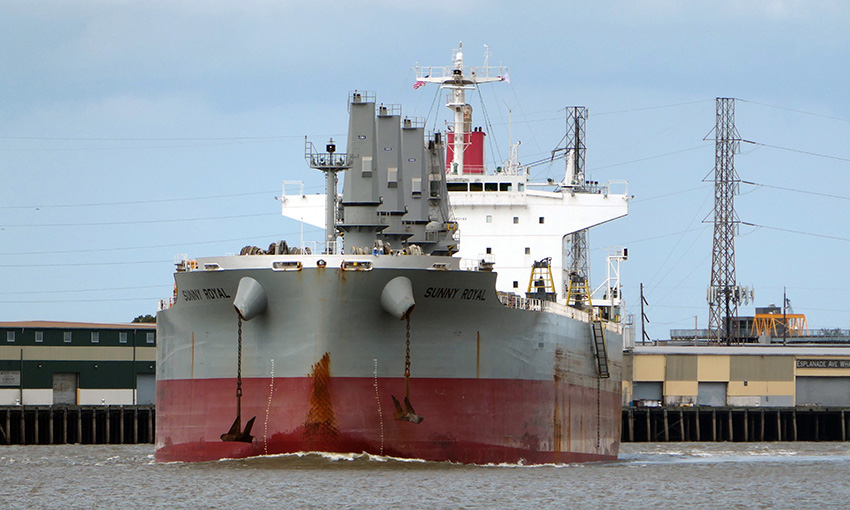THE Baltic Dry Index fell sharply over the past week, arresting an upward trend that had been growing over the past weeks.
On Friday (17 December), the index was 2379, a decrease of 27% on the previous Friday’s 3272.
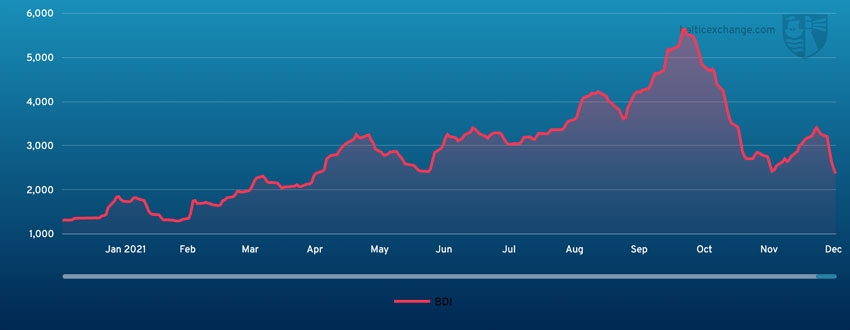
Capesize
The Capsize market moved sharply lower this week with both the overall index and the average of the five timecharter routes declining over 2100 points and US$17,422, compared with last Friday, closing the week at 2727 and US$22,613 respectively.
C10, the transpacific run, was the major contributor to the decline alongside C5, the west Australia to Qingdao run, fell to the level of US$9/mt.
In the Atlantic, both transatlantic and fronthaul continued southwards movement throughout the week.
A quick voyage moving 180,000mt, 10% iron ore, from PDM to Rotterdam was paid US$10.40/mt on 20 to 29 January.
A Capesize vessel was booked for 130,000mt, 10% iron ore, from Narvik to Hansaport on 29 December to 7 January at US$8.40/mt, with the dates slightly out of the index window. The fronthaul business remained lacking, posting US$46,135/day on C9 by the end of the week.
Panamax
‘Twas the week before Christmas, but there was little festive cheer around the Panamax market with substantial corrections enveloping the market. Some scrambled to take cover prior to the holidays and were forced to take lower rates as the tonnage count carried over from last week impacted markets.
The Atlantic failed to find any momentum this week with subdued activity on all usual fronts, some very cheap transatlantic voyage fixtures concluded, reaffirming the negative tone as these provided very weak time charter equivalent returns.
A smattering of EC South America fixtures surfaced. But this failed to provide any support to the Asian basin, despite seeing a reasonable level of activity.
Much of the Indonesian coal stems were mopped up by smaller/cheaper LME tonnage, willing to concede cheaper rates as opposed to Kamsarmax tonnage who mostly resisted as Australian and NoPac enquiry provided some support midweek. However, rates concluded were wide ranging. Very positional but the overall tone was vastly weaker.
Supramax/Ultramax
The last full working week for many prior to the Christmas holidays saw sentiment slide with limited fresh enquiries appearing on the market from key areas and some owners discounting to get cover over the festive season. Limited period activity surfaced but a Tess 64 was rumoured fixed basis delivery April 2022 for three years trading at 117 percent of BSI.
In the Atlantic, a subdued week. A 62,00-dwt fixing delivery US Gulf for a trip to Portugal at US$39,000. Elsewhere a 62,000-dwt open East Coast South America was fixed for a trip to the Red sea redelivery Port Said at US$46,000.
From Asia, demand eased in the South with limited coal enquiry, a 56,000-dwt open Cebu fixing via Indonesia redelivery China at US$25,000. Further north, brokers saw a little more enquiry – but limited information surfaced. A 58,000-dwt open Kunsan fixing a CIS Pacific round, redelivery CJK in the mid US$20,000s.
From the Indian Ocean a 56,000-dwt was fixed from South Africa to the Far East at US$26,000 plus US$600,000 ballast bonus.
Handysize
With the holiday season drawing closer the visible activity levels dropped this week with many having taken cover early it seems. Sentiment softened in most regions as some owners were said to take discounted rates to avoid being open next week.
A 33,000-dwt fixed from the Continent with prompt dates to the US East Coast at US$33,000 and a 38,000-dwt open in Recalada with December dates was fixed for a trip to Morocco at US$41,000.
A 33,000-dwt was prompt December opening was fixed for a trip from Santo to Morocco in the high US$30,000s.
A 28,000-dwt open prompt in Gresik was fixed via Australia to Samalaju with an intended cargo of Alumina at US$19,000.
A 33,000-dwt open in Port Kembla with December dates was fixed with an intended cargo of Alumina to Samalaju at US$22,500.
A 34,000-dwt open in Ulsan was fixed via Japan to South Africa with an intended cargo of steels at US$22,750.
VLCC
The market had a minor rebound this week. On 280,000mt Middle East Gulf to US Gulf (Cape/Cape routing) levels held around the W20.5 mark while the rate for 270,000mt Middle East Gulf to China recouped 2.19 points to W40.05 (showing a roundtrip TCE of US$891/day).
In the Atlantic market, rates for 260,000mt West Africa to China rose 1.91 points to WS41.55 (a TCE of US$3.698k/day roundtrip) and 270,000mt US Gulf to China clawed back 37.5k to US$4.68m (a TCE of US$3.6k per day roundtrip).
Suezmax
In West Africa the market has taken a turn downwards with 130,000mt Nigeria/UK Continent losing 11.02 points to WS71.93 (a roundtrip TCE of US$9260/day).
The market for 135,000mt Black Sea/Med has seen rates move in the same direction, dropping 4.05 points to WS80 (a TCE roundtrip of about US$6.7k per day).
In the Middle East Gulf there has been a little more activity with WS37.5 repeated a couple of times mid-week, bringing the assessment of 140,000mt Basra/Lavera up 2.43 points to the WS36 level.
Aframax
In the Mediterranean, the market for 80,000mt Ceyhan/Lavera climbed 7.03 points to W113.47 (US$12,794 per day TCE roundtrip) this week after bottoming out last Friday. In Northern Europe the market for 80,000mt Cross-North Sea recovered another 10 points to WS112.5 level (a TCE of US$7.5k/day) and the rate for 100,000mt Baltic/UK Continent surged around 30 points to the W110 region (a TCE of about US$22.925k per day roundtrip).
Across the Atlantic, Aframax rates came under pressure and were subsequently tested down all around. The 70,000mt Caribbean/US Gulf dropped 14.37 points to W143.44 (a TCE of US$17.4k/day roundtrip). The 70,000mt East Coast Mexico/US Gulf followed a similar magnitude of reduction in freight levels and ended up at WS149.69 (-16.56) showing a roundtrip TCE of US$21.7k/day. The market for the 70,000mt US Gulf/UK Continent trip saw rates shift 11 points downward to around W122.5 (a TCE of US$12.7k/day roundtrip however, basis one-way economics this improves significantly).
Clean
The Middle East Gulf has been in balance all week with incremental improvements on all sizes. On the LR2s, TC1 currently sits at WS122.14 a round trip TCE of US$12587/day and the most improved of the week at +WS13.93. The LR1s have again been steady all week and TC5 55k Middle East Gulf/Japan is up 2.5 points to WS137.14 – a round-trip TCE of US$11307/day. The MRs were slow to start but took a midweek jump WS7.08 and 35k Middle East Gulf/East Africa (TC17) rose to WS 212.5.
In the Mediterranean the Handymax bubble burst at the end of this week and TC6, 30kt Skikda/Lavera, has come off WS46.25 to WS 275. The LR2s, TC15 80k Mediterranean/Japan remained largely unchanged throughout the course of the week and have dropped slightly to the US$2.15m mark.
The Baltic Handy market has fluctuated down and then back up again from sporadic enquiry this week, TC9 30k Baltic/UK-Continent eventually ended up at around the WS222.5 mark.
On the UK-Continent, MR freight levels subsided as available tonnage gradually increased this week. TC2 37k UK-Continent/US Atlantic Coast is currently marked at WS180 (-WS7.22) and TC19 37k Amsterdam to Lagos followed suit down to WS182.14 down 9.29 points (a round trip TCE of US$13918/day).
On the LR1s, TC16 60k Amsterdam/Offshore Lomé felt a welcome boost off the back of activity in the region and ended up at WS142.86 (+WS6.79).
In the Americas both runs peaked mid-week, WS130 on TC14 and WS195 on TC18. Both have since been tested down. TC14 38k US Gulf/UK-Continent is now WS 126.43 and TC18 38k from US Gulf/Brazil WS 186.79. The MR Atlantic basket TCE rose from US$17601/day to US$17,779/day.


